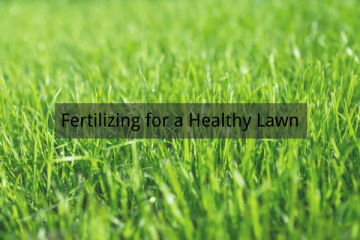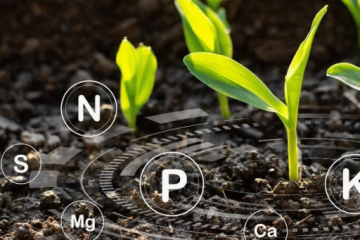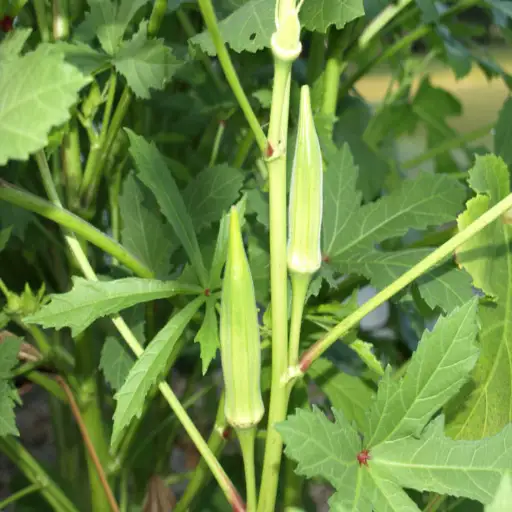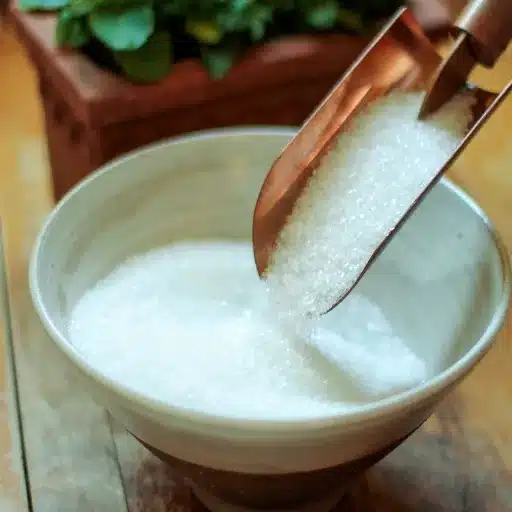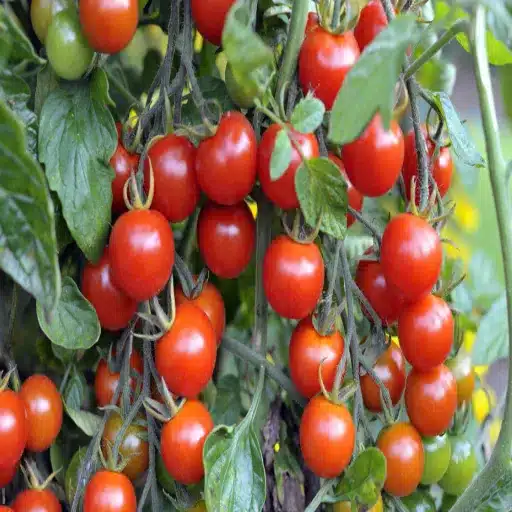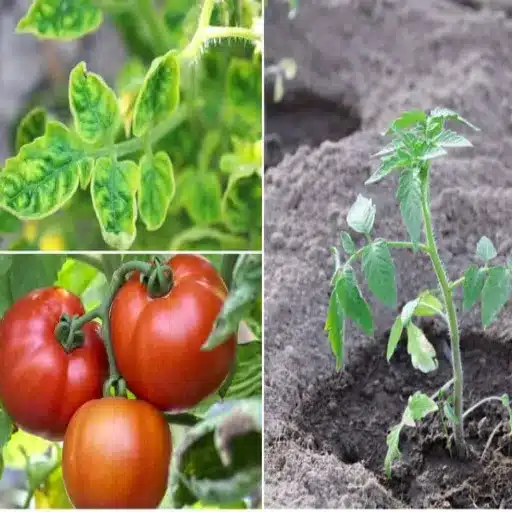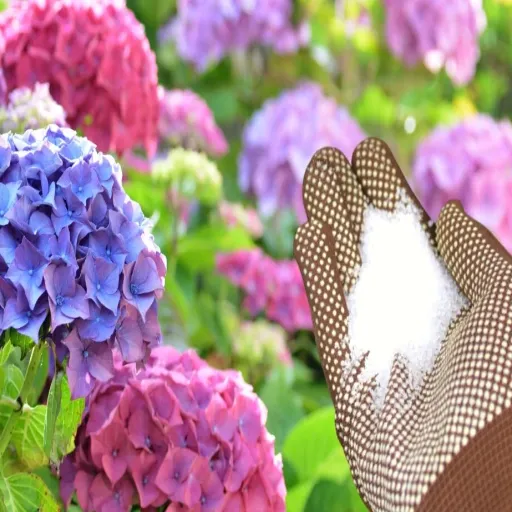Growing healthy and productive okra plants requires careful attention to soil health and nutrient balance. Many gardeners have turned to Epsom salt as a potential solution for improving plant growth and yield, but is it truly beneficial for okra cultivation? This article dives into the science behind Epsom salt, exploring its composition and how it might impact okra plants. Whether you’re a seasoned gardener or just starting, this guide will help you understand the potential benefits, risks, and best practices for using Epsom salt effectively in your okra garden. Let’s separate the myths from the facts and uncover whether Epsom salt is the key to thriving okra plants.
How Does Epsom Salt Benefit the Garden?

What Role Does Magnesium Play in Plant Health?
Magnesium, as an essential macronutrient, is critical in multiple plant growth and developmental processes. At the base of magnesium’s capacity is its participation in photosynthesis, that is, the process by which plants manufacture their food, and in the presence of magnesium, energy can be transformed into chemical energy; that is, photosynthesis takes place through magnesium. Magnesium aids in forming chlorophyll, which captures sunlight, and is useful in enabling the production of chlorophyll in plants, which is vital for photosynthesis to take place. In the absence of magnesium, chlorophyll would not be made, and the crops would be damaged. Along with this, magnesium also prevents chlorosis, which leads to yellowing of leaves between the veins.
Magnesium also acts as a cofactor in enzymatic photolytic reactions, influencing the synthesis of proteins and metabolism of carbohydrates, alongside changing into large enzymes that take charge in the process and also assist magnesium in the strengthening of the structures. Magnesium supports enhance the scope of cell ion balance and nutrient transport across plant cells, considering also boosting the routing of sugar from the leaves towards other parts of the plant. All these jointly help aid high performance and product per plant.
Research indicates that levels of magnesium in the soil can have a direct effect on the potential yield of crops grown on that particular field. To demonstrate, a lack of magnesium in okra can severely stunt its growth, pod formation, and overall quality. Therefore, it is crucial to manage magnesium concentration in the soil continuously using either biological amendments, fertilizers, or even Epsom salt (Magnesium sulfate). Nevertheless, one must first evaluate the soil state, since excess application risks nutrient imbalance, synergetic death, and other detrimental factors. Testing a soil sample before modifying its magnesium concentration has great value when it comes to maintaining plant health effectively.
Can Epsom Salt Improve Soil Nutrient Levels?
Magnesium is important for photosynthesis due to its being a vital component of chlorophyll, and sulfate aids in the formation of proteins in plants. The application of Epsom salt with soil amending requires careful balancing control, these are often dictated by soil tests, as excessive amounts of magnesium alter the calcium and potassium uptake ratios, proving detrimental to soil health.
Magnesium sulfate performs better in acidic, sandy soils that suffer from nutrient leaching. These soils lack an adequate supply of magnesium, making the accessible form of supplementation Epsom salt. For application, Epsom salt can either be introduced into planting beds or prepared with water to be used as a spray on the leaves. Empirical studies focusing on tomatoes, peppers, and rose crops found that a single application of Epsom Salt could be beneficial, but tailored based on the specific crop needs, along with soil requirements, to provide the best outcome.
While analyzing the effectiveness of magnesium, it’s equally important to consider its interactions with other nutrients. Magnesium sulfate’s overuse can raise soil salinity, thus damaging soil structure and microbial life. To promote balanced soil fertility and boost plant health, nutria management approaches that blend soil analysis, organic matter fertilization, and Epsom salt moderation must be applied.
How to Use Epsom Salt in Your Garden

What is the Recommended Amount of Epsom Salt per Plant?
The amount of Epsom salt recommended for each plant depends on its species and level of growth. For example, every Gallon of Water used for gardening is blended with 1-2 tablespoons of Epsom Salt for Shrubs, Vegetables, and Flowers meant for Foliage or Basal Sprays. Larger plants like trees require dry salts, so one to two cups of Epsom Salt is sprinkled around the tree stem.
Tomatoes and Peppers demonstrate how Epsom Salt can be useful when blended with Potassium and Sodium-rich Sulfurs. For optimal results, one tablespoon should be blended with water at seed placement, then a month later, reapply the same solution. During these development phases, the burden of enhanced magnesium amounts should be moderated to reasonable levels and not interfered with by other factors like calcium and soil potassium. If not, the possibility of slow nutrient absorption and restricted plant growth becomes likely.
It is essential to match the application rates to the results of a soil test. A soil test before applying Epsom salt is important in confirming that the magnesium level present is not already in excess. Applying too much of these substances without sufficient evidence may create negative conditions, including detrimental soil salinity or low microbial activity. Through the integration of Epsom salt and sound agronomic practices such as frequent soil monitoring and organic matter addition, the health of the plants can be improved without jeopardizing the ecosystem equilibrium of the soil.
When is the Best Time to Apply Epsom Salt for Okra?
The timing for the application of Epsom salt to okra plants hinges on its growth stage and specific soil conditions post-testing. Applying Epsom salt during the seedling stage is ideal since the plant is developing its roots alongside its first set of leaves. Epsom salt enhances growth during the early stages owing to magnesium’s role in restoring and maintaining respiration and photosynthesis in the plant. To maximize yield at this stage, Epsom salt should be applied as a foliar spray at a dilution rate of one tablespoon per gallon of water every two weeks.
Okra plants placed in mid-growth require consistent Epsom salt application, especially during the flowering and fruiting stages that heighten the demand for magnesium and sulfur. With prolonged exposure to magnesium deficiency, yellowing between veins occurs, which is referred to as interveinal chlorosis. To treat this condition, Epsom salt can be sprinkled around the base of the plant. For more urgent cases of interveinal chlorosis, Epsom salt can be added as a foliar spray for immediate use. These should be done during the late evening or early morning to reduce the risk of damage from sun scorching and improve nutrient uptake through the leaves.
If there are ongoing deficiencies proven through soil or tissue analysis, supplemental applications may be required. Managing the soil’s salinity levels is crucial in the late stages, as repeated use of Epsom salt may heighten the chance of mineral imbalance in the soil. Regular testing of the soil, along with monitoring the health of the plant, helps in verifying that the application of epsom salt doesn’t negatively impact the soil composition while also helping to achieve optimal yields of okra crops.
Should Epsom Salt be Used as a Spray or in the Soil?
First evaluate the condition of the plant and the soil to understand if Epsom salt needs to be sprayed or applied directly. when used as a spray, the solution gives magnesium and sulfur to the leaves directly by way of the plant’s skin pores. Foliar nutrient applications are able to remedy severe nutrient shortages because nutrients are taken in through the stomata and can yield results in a short period of time.
When these salts are added to the soil, it helps in Epsom salt. Soil incorporation ensures gradual supply thus this method is good for long term provision of nutrients and increasing soil fertility. Nonetheless, one must avoid strong application because too much magnesium can hinder the absorption of calcium and potassium leading to potassium deficiency.
Applying foliar spray for quick boosts during important growth milestones and supplementing with a soil application for steady-release balanced nutrition have had enhanced results in okra, tomato, and pepper crop yields. Nevertheless, the decision to use either spray application or soil application should be based on a thorough study of soil composition alongside plant condition and environmental factors to deliver the most precision with the least waste.
What Are the Signs of Magnesium Deficiency in Okra Plants?
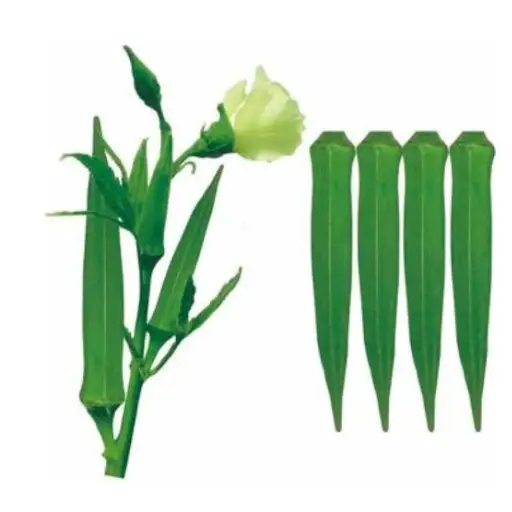
How to Identify Deficiencies in Leaves?
Symptoms of magnesium deficiency in okra plants can be identified quickly, as they show themselves distinctly and progressively on leaves. Chlorosis between the veins (interveinal chlorosis) is among the most noteworthy symptoms, describing the condition whereby a part of a leaf corresponding to the spaces between the veins becomes discolored (yellow), while the veins remain green. This is most pronounced in older leaves where magnesium is drawn from older foliage due to cad mobility to the newer growth as the plants deplete magnesium.
Other symptoms include leaves that are cupped or curled and drooping, which may die in the long run. Sooner rather than later, the yellowing will lead to necrotic spots or even premature leaf drop. All of these will synergistically impair the plant health and productivity. When it comes to soil pH, the intensity of these symptoms can shift depending on it due to a decrease in magnesium availability in strongly acidic or strongly alkaline soils.
To make sure there is magnesium deficiency, they often rely on tissue or soil analysis believed to provide information compliant to agronomic practices. Diagnostic tools in question grant information far more accurate for underlying magnesium level in the soil and the plant system, enabling quicker approaches like applying magnesium sulfate (Epsom salts) or changing soil amendments to attain their balance and sufficiency substances.
What are the Effects on Okra Yield?
Lack of magnesium negatively affects the yield of okra as well as its plant health. As magnesium is an integral part of chlorophyll, it impacts the photosynthetic capacity of the plant, which affects its growth and fruiting. Magnesium deficient plants exhibit interveinal chlorosis, leaf curling, and abscission which impedes nutrient transport and diminishes energy availability for fruit development.
The prolonged duration of magnesium deficiency may lead to reduced pod size, decreased fruit weight, and overall reduced yield. For instance, okra plants which are deprived of magnesium tend to have lower biomass metabolism which limits the synthesis of critical carbohydrates needed for sustaining fruiting. Also, wide spread poor magnesium availability often tend to worsen the effects of many nutrient deficiency symptoms because magnesium helps with enzyme and ion transport activation in the plant.
Applying remedies with magnesium sulfate has shown to improve okra yields, along with other corrective measures that employed soil lime to enhance magnesium solubility in the soil. Tactics for identifying soil and plant tissue analysis remain essential in soil management for understanding the underlying problem as well as controlling the possible circumstance to conquer yield reduction.
Comparing Epsom Salt with Other Garden Fertilizers

How Does Epsom Salt Compare to Balanced Fertilizers?
Commonly known as Epsom salt, helps in the plant’s nutritional needs by delivering magnesium and sulfur, both of which are crucial secondary nutrients. Epsom salt, unlike balanced fertilizers that provide macronutrients like nitrogen (N), phosphorus (P), and potassium (K), does not help in meeting the primary nutrient requirements of the plants. It serves as an auxiliary to magnesium-deficient crops or those requiring some sulfur.
Balanced fertilizers contain multiple nutrients to improve the health of the plants, hence making it ideal for different species and types of soil. Balanced fertilizers, in contrast, with added micronutrients ensure a well-rounded approach for proper growth. Also, Epsom salt helps target problems related to a deficiency of magnesium, for example, in chlorosis and stunted growth in crops, including tomatoes, peppers, and roses.
Studies indicate that Epsom salt can work alongside other fertilizers when used in a more complex approach to managing soil. For instance, applying Epsom salt to soil deficient in magnesium can enable better nutrient absorption and increase photosynthetic activity, especially in magnesium-using functions like chlorophyll synthesis. Still, excess use of Epsom salt poses risks, especially without prior assessment.
Is Epsom Salt More Beneficial Than Other Organic Options?
Analyzing the advantages of Epsom salt relative to other organic alternatives begins with assessing its purported purpose and comparing it to other commonly used organic soil amendments. Due to its content of magnesium sulfate, Epsom salt takes care of magnesium shortages, one of the plant micronutrients crucial for photosynthesis, and other enzymatic activities within the tissues of a plant. In contrast, organic amendments such as compost, bone meal, or worm castings provide a balanced multi-nutrient mix which includes nitrogen and phosphorus, potassium, along with trace metals essential for soil and microbial life.
While magnesium-poor soils can benefit from the use of Epsom salt and Epsom salt is a targeted approach to resolving some challenges, the absence of soil testing will render results very limited. Applying Epsom salt too liberally can disrupt the balance of nutrients in the soil and raise salinities to non-ideal levels for growth of plants. In comparison to organic materials, Epsom salt does little to improve soil structure, increase water retention, enhance long term fertility, and other soil nutrient attributes.
Epsom salt may indeed outperform generalized amendments when targeting magnesium supplementation. However, for enhancing soil ecology and gardening based on permaculture principles, organic materials provided tend to be more beneficial.
Are There Any Risks of Using Epsom Salt in the Garden?

What are the Potential Side Effects on Soil pH?
The use of Epsom salt in moderation will not affect the pH of the soil within a garden. This is reasonable because Epsom salt’s makeup of magnesium sulfate is neutral which does not considerably increase or decrease the acidity of soil, therefore it is mostly safe for plants.
On the downside, constant use of Epsom salt can increase the amount of magnesium in the soil. This can trigger the magnesium to interfere with soil structure, making it more compact. Thus indirectly affecting the soil’s pH stability, nutrient availability, and the overall poor soil structure. Compacted soil can lead to limited drainage and aeration, which may promote slight pH shifts and nutrient shortages.
While caring for the balance within a garden, it is prudent to conduct soil testing at regular intervals rather than relying solely on Epsom salt. For gardeners who worry about soil pH and nutrient balance, routine soil testing is suggested before the use of Epsom salt. Regular testing ensures that supplementation with magnesium is necessary while avoiding the risks posed by over-application, which can lead to nutrient leaching or degradation of soil quality. Gardeners must strive to meet specific garden requirements to achieve a balanced ecosystem that is both productive and wholesome, and aim for soil health.
Can Epsom Salt Harm the Roots of Okra Plants?
Magnesium sulfate is what makes up Epsom salts. It is widely agreed that it is safe for okra plants as long as it is used correctly and in moderation. Despite this, overuse can lead to increasing levels of magnesium in the soil, which disrupts the balance of other nutrients. This imbalance could prevent the plant from taking in other vital nutrients such as potassium and calcium, which maintain the health of the root system and the plant’s overall growth. Therefore, giving the plant too much Epsom salt can hurt it indirectly by drastically lowering root growth.
Adding too much magnesium can also cause soil compaction and nutrient leaching, which hampers the root zone. Compact soil decreases access to oxygen for the roots, which is detrimental to their survival. On the other hand, leaching washes away crucial nutrients, starving the plant. Both factors can enhance nutrient deficiency while severely reducing the seedlings’ ability to establish strong vertical roots. This ultimately hinders the seedlings’ ability to take full advantage of having cultivars planted within proximity, drastically lowering vigor and productivity.
For protection purposes, the application of Epsom salt has to be made only after soil testing shows the presence of magnesium levels. In the case of magnesium application, it must be done at a recommended ratio and with proper irrigation to prevent concentration buildup in the root zone. Following these recommendations will allow Epsom salt to aid in the growth and health of the okra plants without inadvertently damaging the roots or jeopardizing the surrounding soil microenvironment.
References
Frequently Asked Questions (FAQs)
Q: What are the benefits of using Epsom salt for growing okra plants?
A: Epsom salt can provide essential nutrients like magnesium, which helps plants absorb nutrients more effectively, leading to healthier okra growth during the growing season.
Q: How should Epsom salt be applied to okra plants?
A: Epsom salt can be dissolved in water and used as a foliar spray or directly added to the soil. Using a spray bottle to apply Epsom salt water to plant leaves can be an effective method.
Q: How often should I fertilize okra plants with Epsom salt?
A: It is generally recommended to fertilize okra plants with a good amount of Epsom salt water once a month during the growing season to ensure they receive adequate magnesium.
Q: Can Epsom salt be used in conjunction with other fertilizers like chicken manure?
A: Yes, Epsom salt can be used alongside other organic fertilizers such as chicken manure and eggshells to provide a balanced nutrient profile for okra plants.
Q: How does Epsom salt affect the height of okra plants?
A: Adding magnesium from Epsom salt can promote taller plant growth by enhancing nutrient uptake, leading to a more robust okra plant.
Q: Is it necessary to soak okra seeds in Epsom salt water before planting?
A: Soaking okra seeds in Epsom salt water before planting is not necessary, but it can help improve germination rates and promote healthier seedlings.
Q: Can Epsom salt help with pest control on okra plants?
A: While Epsom salt is not a pesticide, maintaining healthy plants with proper nutrients can make them less susceptible to bugs and other pests.
Q: Is Epsom salt suitable for okra plants grown in containers?
A: Yes, Epsom salt can be beneficial for container-grown okra, ensuring they receive enough magnesium and nutrients, especially if using loam soil.
Q: How does Epsom salt influence okra yield at harvest?
A: By promoting healthier plant growth and nutrient absorption, Epsom salt can potentially lead to a better harvest with more abundant okra pods.
Q: Can Epsom salt be used on okra plants transplanted from last year?
A: Yes, Epsom salt can be used on transplanted okra plants to boost their nutrient intake and help them establish quickly in their new location.

